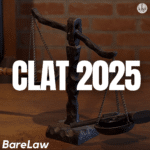
INTRODUCTION:
‘Everyone who is author of any literary and artistic work has right to protect same’. Any intangible property like inventions, literary or artistic work, designs, symbols, or property owned by a person is ‘Intellectual Property’ (IP). The ‘Rights’ that are in association with the protection of any such ‘Intellectual Property’ are known as ‘Intellectual Property Rights’ (IPR). IPR is in need of an hour for encouraging inventions that promote the social, cultural, scientific, and economic development of the country. It facilitates the practice of fair trading, promotes creativity, and gives recognition for their work. IPR gives you protection from other similar businesses which may lead to incurring heavy legal costs. It helps in the prevention of unauthorized use of work but enforcing IP Rights can leads to a reduction in consumers. It provides for the ‘Unique Identification’ of your product but eventually the ‘Unique Identification’ is subjected to certain limitations.
There are various kinds of IPs:
- COPYRIGHT: It is about the rights that people have over his/her literary or artistic work.
- PATENTS: It is granted to someone who has exclusive rights over his/her invention.
- TRADEMARKS: It is a sign that helps in the differentiation of products or services from one company to other.
- INDUSTRIAL DESIGNS: It constitutes an aesthetic aspect of the article.
- GEOGRAPHICAL INDICATION: It is a sign that indicates the geographical location of products to show they will have certain qualities, reputations, and characteristics.
WHAT IS COPYRIGHT?
The term ‘Copyright’ is derived from two words i.e., ‘Copy’ and ‘Right’ concluding it as ‘Right to Copy’. It is a ‘Legal Right’ or ‘IPR’ to a person who has the right to protect his artistic or literary work. It could vary from lyrics of the music to graphic designs or computer software. It protects the original work from being used as the same but with a duplicate copy of the same. When any such work is created by any independent creator it may be called an ‘Original Work of Authorship’. Anyone who is the original creator has the right over the usage of the product and prevents anyone to duplicate it. The creator can get his/her rights protected under IPR. Then he may file a case against anyone who misuses the work.
Indian history of copyright dates back to 1847 when registration was necessary to get copyright over their work. In the year 1914 new changes were made in legislation. These include ‘Criminal Sanctions’ if copyright is infringed. It declared Copyright as a ‘Sole Right’ that involves reproduction, change, and publishing of a translation of work. In the year 1957, fresh legislation was passed in the name of ‘The copyright Act’.
The duration and ownership of the product may vary from work to work—
- Literary Work includes books, journals, and magazines, the author has a copyright during his lifetime which extends to 60 years after death.
- Dramatic Work includes screenplays, and operas aiming at the protection of various people that are involved in the same.
- Musical Work includes music, the author has copyrighted during his lifetime and extends to 60 years after death.
- Sound Recordings include the speech of any person, the producer has copyright during his lifetime and extends to 60 years after death.
‘Copyright in Ownership’ is a ‘sui generis’ Right meaning that anyone having copyright of his work has to Primary Right over the property. All categories mentioned above for work come within the framework of Copyright Ownership.
INFRINGEMENT OF COPYRIGHT:
‘Infringement of Copyright’ is when anyone uses the registered work of someone else is it the theme of a book, article, or lyrics. Even posting of such copyrighted work online without the consent of that person it leads to infringement. The ‘Infringement of Copyright’ can be remedied by—
- Compensating for Damages
- Imprisonment to accused
- Importing copies to the original owner
As society faces changes with new technologies the protection of IP has become difficult. India signed treaties with World Intellectual Property Organization (WIPO). The WIPO has been debating making more stringent laws for protection in cyberspace. These include WIPO Copyright Treaty and WIPO Performance & Programme Treaty. With the amendment of 2012 India aims to bring Indian Copyright into compliance with the international level. Some of the changes made under this amendment include—
- Cinematograph Films
- Sound Recordings
- Grant of License
- Protection from Internet Piracy
PACKAGING:
The packaging of the product decides the customer’s interest in it. The market offers consumers a wide range of choices of one product. Some of the product packaging can be identified that often tends to manipulate the consumers. The packaging can determine the qualities and unique nature that the product may have. It involves designing a package that looks attractive and appealing to consumers. Packaging can itself be copyrighted as people often misuse others’ efforts and shows it as their own. The product reaches its customer involving production, transportation, and consumption so packaging should be of securing the safety of the product.
In modern times packaging plays an important role as it is made with the point of attracting consumers. The high competition in the market leads packaging of products as people even make duplicate packaging to earn profits. It aims at the identification of products, and brand names, and the prevention of contamination from the physical environment. There are 3 Kinds of Packaging—
- Family Packaging: Any manufacturer that packs all its product in the same packaging.
- Reuse Packaging: Any manufacturer that packs its products in any reusable thing.
- Multiple Packaging: Any manufacturer that packs varieties of products.
LAWS INVOLVED:
Identical Packaging is using packaging that is already used by some other owner for the sale of products. It is an illegal practice but to date, no law has been made in this regard. Some Legislations include—
Bureau of Indian Standards: It is an organization that manages the development of standardization, qualities, and marking certification of the product.
Legal Metrology Act, 2009 & Packaged Commodities Rule, 2011: It mentions rules for pre-packaged commodities and their labeling requirements.
Food Safety & Standard Authority of Indian Act, 2006 & Rules 2011: It provides for general packaging requirements.
Copyright Act: Protects the misuse of any literary and artistic work.
In the recent case Parle Products Pvt. Ltd. v. Future consumer Ltd., it was contended that the plaintiff has copyright over packaging. Whereas defendants used similar or identical packaging for selling their own products. But the court held that ‘It cannot be a mere coincidence having such identical labels.
CONCLUSION:
Intellectual Property existence cannot be neglected. For recognition of one’s value of the able to work, these rights must be recognized. It further helps the country in competing at international work. These give creators inspiration to thrive for the best. These support innovators and help them in learning new techniques. Identical Packaging is a concern for creators. As it may cause them stress over their efforts, they put for someone ending up misusing it. However, there are no specific legislations regarding the same but, it is need of an hour.



